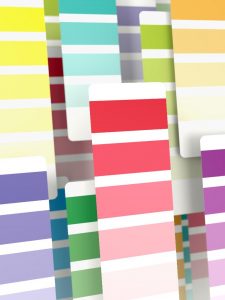The Top Five Mistakes People Make in Print Design

Every now and then I like to do a bit of a Print FAQ refresh, because we get new customers all the time who aren't familiar with designing for print. Print Magazine recently posted a fabulous FAQ full of super handy facts about Print Design that we just had to share!
Things to Keep In Mind:
Color Space - Your monitor works in RGB, which is a light-based color space capable of thousands of nuanced colors. In contrast, four-color printing is based on CMYK toners, and the gamut of colors possible is a great deal more restricted. Certain colors (particularly bright blues and oranges) are impossible to recreate from screen to paper without special processes that can limit print options or increase cost dramatically.
DPI versus PPI - Screens are based on a fixed number of pixels, while print is based on dots per inch. Both of these are measurements of density, not scale - an 800 x 600 pixel image doesn't translate to an 8 inch x 6 inch print, moreover if that same image is to be blown up to 8 ft, it will be low resolution, because there simply isn't enough image data.
Print is Physical - It's very easy to forget when designing on a flat screen that we're working with a product that will eventually exist in a 3-dimensional space. Being conscious and aware of margins, gutters, creases and folds from the beginning will save you from headaches in the finishing process, and help you consider how a piece flows and feels.
The Top Five Mistakes in Print Design:
- Include Bleeds - If your design has graphics or images that run to the edge of the page, there needs to be an additional .125" of image area at the edge of the page to allow for overlap when cutting.
- File Output/Size - How you export final files for printing can have a multitude of effects, from the resolution and color to issues such as transparencies and drop shadows not rendering properly. Using recommended design software can aid in this, and learning how to properly save and optimize files for the proper print process can help minimize errors in consistency and color.
- Readability and Scale - Your screen can render more fine detail than most printers, and has the ability to zoom in. It's very easy to design something that becomes difficult to read or interpret at 100%. I use the "cross-eyed" technique to help me get an idea how something will look from a distance, and advocate previewing/printing a sample at size whenever possible to make sure things look the way you want!
- Margins and Borders - It's often tempting to put borders or thin margins on a design, but the reality is most print processes have a margin of error that can make finishing difficult for things with precise borders. Booklets and multi-page books in particular need allowance for trimming so that the edges of the pages are even, so that the innermost page might be significantly shorter than the outer page.
- Ink Coverage - Rich density or "build" blacks and grays tend to give a better finished look than simply a percentage of black for digital printing, but try to keep your mix of C/M/Y/K to under 300% density so that the paper doesn't warp or ripple from the amount of saturation. This means if you were creating a rich density black, instead of setting all four values to 100%, you might set it to 50/50/50/100.